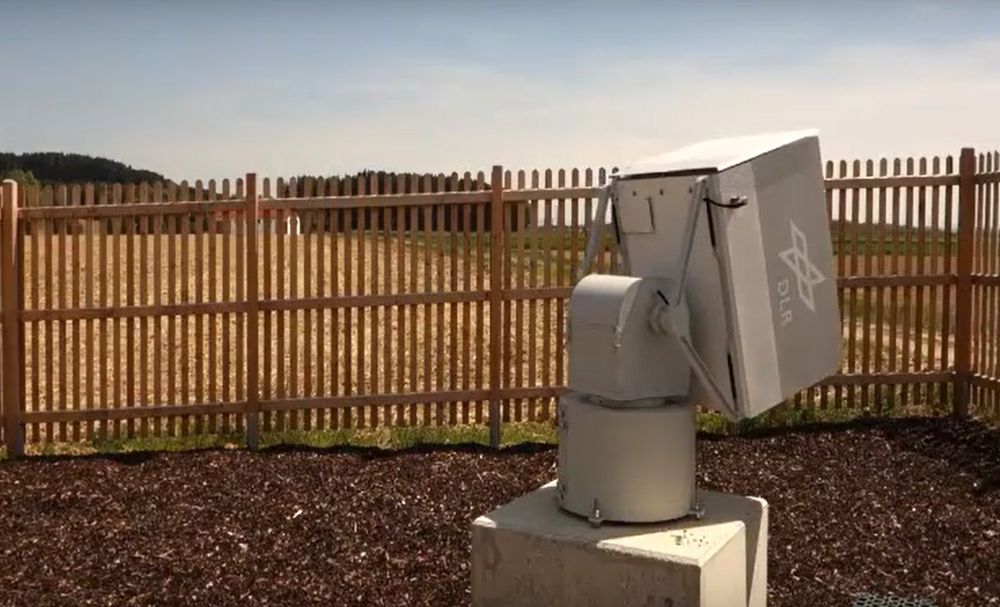“Kalibri” Transponders

Remote-controlled transponders
Your consent to the storage of data ('cookies') is required for the playback of this video on Youtube.com. You can view and change your current data storage settings at any time under privacy.
Over the years the Calibration Group has developed and built highly accurate transponders in various frequency bands including X, C, and L band for different SAR missions. The development of the so called “Kalibri” transponders, which have been operated successfully for ESA’s Sentinel-1 mission in the frame of the European Copernicus program since 2014, was focused on radiometric accuracy and autonomous, remote-controlled outdoor operation for more than a decade.
For this purpose, the transponders are remotely aligned towards the satellite by a two-axis positioner. The transponder concept is based on a two-antenna design ensuring a small time delay between reception and re-transmission of the radar signal. Furthermore the complete electronic and both antennas are embedded in a temperature stabilized housing, as shown by the open device in Figure 1, in order to protect them from different weather conditions. The superior radiometric stability of below 0.1 dB is maintained by an internal calibration loop. An FPGA-based subsystem allows for a digital recording of radar chirps.

The configuration of satellite overpasses and the corresponding data acquisitions are conducted in an automated fashion and can be conveniently scheduled and monitored by a web interface. The complete in-house development features a modular design, that allows to adapt the proven concept to different frequency bands: currently, front-ends for C and X band exist.
Based on the Kalibri design we developed two highly accurate C-band transponders for the RADARSAT Constellation Mission (RCM) of the Canadian Space Agency (CSA). Both transponders were deployed in Canada in 2017 and have been fully operational since then.
Through European and international projects we could well expand the radar calibration activities as well as strengthen our position as a DLR SAR Calibration Center. Beyond TerraSAR-X and TanDEM-X, the DLR SAR Calibration Center has been supporting ESA’s Sentinel-1A/-1B missions since 2014. All these missions enabled the achievement of a set of accuracies for the different calibration methods and techniques, which are summarized in Table 1, and which can be considered as benchmarks.

With our DLR SAR Calibration Center and the continuing effort on developing new calibration techniques, targets as well as analysis and evaluation tools, the Institute is well prepared for the challenges of the next generation of SAR missions.
